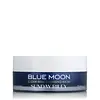What's inside
What's inside
 Key Ingredients
Key Ingredients

 Benefits
Benefits

 Concerns
Concerns

 Ingredients Side-by-side
Ingredients Side-by-side

Caprylic/Capric Triglyceride
MaskingSucrose Laurate
EmollientJojoba Esters
EmollientAcacia Decurrens Flower Wax
EmollientGlycerin
HumectantHelianthus Annuus Seed Wax
Skin ConditioningPolyglycerin-3
HumectantGlyceryl Behenate
EmollientC10-18 Triglycerides
EmollientTheobroma Cacao Seed Butter
EmollientPEG-8 Beeswax
EmulsifyingCetyl Alcohol
EmollientCeteth-20
CleansingSteareth-20
CleansingPolyglyceryl-6 Oleate
EmulsifyingPolyglyceryl-3 Beeswax
EmulsifyingSqualene
EmollientCitrus Tangerina Peel
AbrasiveCitrus Sinensis Peel Oil Expressed
PerfumingTanacetum Annuum Flower/Leaf/Stem Oil
MaskingChamomilla Recutita Oil
MaskingVanilla Planifolia Fruit Extract
Skin ConditioningCananga Odorata Flower Oil
MaskingCitrus Aurantium Amara Peel
Skin ConditioningCitrus Aurantium Amara Flower Oil
MaskingAnthemis Nobilis Flower Oil
MaskingPhenoxyethanol
PreservativeMoringa Oil/Hydrogenated Moringa Oil Esters
Skin ConditioningChlorphenesin
AntimicrobialCaprylyl Glycol
EmollientCaprylic/Capric Triglyceride, Sucrose Laurate, Jojoba Esters, Acacia Decurrens Flower Wax, Glycerin, Helianthus Annuus Seed Wax, Polyglycerin-3, Glyceryl Behenate, C10-18 Triglycerides, Theobroma Cacao Seed Butter, PEG-8 Beeswax, Cetyl Alcohol, Ceteth-20, Steareth-20, Polyglyceryl-6 Oleate, Polyglyceryl-3 Beeswax, Squalene, Citrus Tangerina Peel, Citrus Sinensis Peel Oil Expressed, Tanacetum Annuum Flower/Leaf/Stem Oil, Chamomilla Recutita Oil, Vanilla Planifolia Fruit Extract, Cananga Odorata Flower Oil, Citrus Aurantium Amara Peel, Citrus Aurantium Amara Flower Oil, Anthemis Nobilis Flower Oil, Phenoxyethanol, Moringa Oil/Hydrogenated Moringa Oil Esters, Chlorphenesin, Caprylyl Glycol
Aloe Barbadensis Leaf Juice
Skin ConditioningCarthamus Tinctorius Seed Oil
MaskingCetyl Alcohol
EmollientGlyceryl Stearate
EmollientDiatomaceous Earth
AbrasiveGlycerin
HumectantGlycolic Acid
BufferingSodium Glycolate
BufferingSodium Trideceth Sulfate
CleansingSqualane
EmollientAnthemis Nobilis Flower Extract
MaskingSaponaria Officinalis Leaf/Root Extract
Skin ConditioningHexylene Glycol
EmulsifyingFructose
HumectantGlucose
HumectantSucrose
HumectantUrea
BufferingDextrin
AbsorbentAlanine
MaskingGlutamic Acid
HumectantAspartic Acid
MaskingHexyl Nicotinate
EmollientPersea Gratissima Oil
Skin ConditioningTriticum Vulgare Germ Oil
EmollientCorylus Avellana Seed Oil
EmollientSesamum Indicum Seed Oil
EmollientPhenoxyethanol
PreservativeCaprylyl Glycol
EmollientEthylhexylglycerin
Skin ConditioningXanthan Gum
EmulsifyingParfum
MaskingChlorphenesin
AntimicrobialCyamopsis Tetragonoloba Gum
Emulsion StabilisingSodium Hyaluronate
HumectantCitric Acid
BufferingAloe Barbadensis Leaf Juice, Carthamus Tinctorius Seed Oil, Cetyl Alcohol, Glyceryl Stearate, Diatomaceous Earth, Glycerin, Glycolic Acid, Sodium Glycolate, Sodium Trideceth Sulfate, Squalane, Anthemis Nobilis Flower Extract, Saponaria Officinalis Leaf/Root Extract, Hexylene Glycol, Fructose, Glucose, Sucrose, Urea, Dextrin, Alanine, Glutamic Acid, Aspartic Acid, Hexyl Nicotinate, Persea Gratissima Oil, Triticum Vulgare Germ Oil, Corylus Avellana Seed Oil, Sesamum Indicum Seed Oil, Phenoxyethanol, Caprylyl Glycol, Ethylhexylglycerin, Xanthan Gum, Parfum, Chlorphenesin, Cyamopsis Tetragonoloba Gum, Sodium Hyaluronate, Citric Acid
 Reviews
Reviews

Alternatives
Ingredients Explained
These ingredients are found in both products.
Ingredients higher up in an ingredient list are typically present in a larger amount.
Caprylyl Glycol is a humectant and emollient, meaning it attracts and preserves moisture.
It is a common ingredient in many products, especially those designed to hydrate skin. The primary benefits are retaining moisture, skin softening, and promoting a healthy skin barrier.
Though Caprylyl Glycol is an alcohol derived from fatty acids, it is not the kind that can dry out skin.
This ingredient is also used as a preservative to extend the life of products. It has slight antimicrobial properties.
Learn more about Caprylyl GlycolCetyl Alcohol is a fatty alcohol. Fatty Alcohols are most often used as an emollient or to thicken a product.
Its main roles are:
Though it has "alcohol" in the name, it is not related to denatured alcohol or ethyl alcohol.
The FDA allows products labeled "alcohol-free" to have fatty alcohols.
Learn more about Cetyl AlcoholChlorphenesin is a synthetic preservative. It helps protect a product against bacteria in order to extend shelf life. In most cases, Chlorphenesin is paired with other preservatives such as phenoxyethanol and caprylyl glycol.
Chlorphenesin is a biocide. This means it is able to help fight the microorganisms on our skin. It is also able to fight odor-releasing bacteria.
Chlorphenesin is soluble in both water and glycerin.
Studies show Chlorphenesin is easily absorbed by our skin. You should speak with a skincare professional if you have concerns about using Chlorphenesin.
Learn more about ChlorphenesinGlycerin is already naturally found in your skin. It helps moisturize and protect your skin.
A study from 2016 found glycerin to be more effective as a humectant than AHAs and hyaluronic acid.
As a humectant, it helps the skin stay hydrated by pulling moisture to your skin. The low molecular weight of glycerin allows it to pull moisture into the deeper layers of your skin.
Hydrated skin improves your skin barrier; Your skin barrier helps protect against irritants and bacteria.
Glycerin has also been found to have antimicrobial and antiviral properties. Due to these properties, glycerin is often used in wound and burn treatments.
In cosmetics, glycerin is usually derived from plants such as soybean or palm. However, it can also be sourced from animals, such as tallow or animal fat.
This ingredient is organic, colorless, odorless, and non-toxic.
Glycerin is the name for this ingredient in American English. British English uses Glycerol/Glycerine.
Learn more about GlycerinPhenoxyethanol is a preservative that has germicide, antimicrobial, and aromatic properties. Studies show that phenoxyethanol can prevent microbial growth. By itself, it has a scent that is similar to that of a rose.
It's often used in formulations along with Caprylyl Glycol to preserve the shelf life of products.